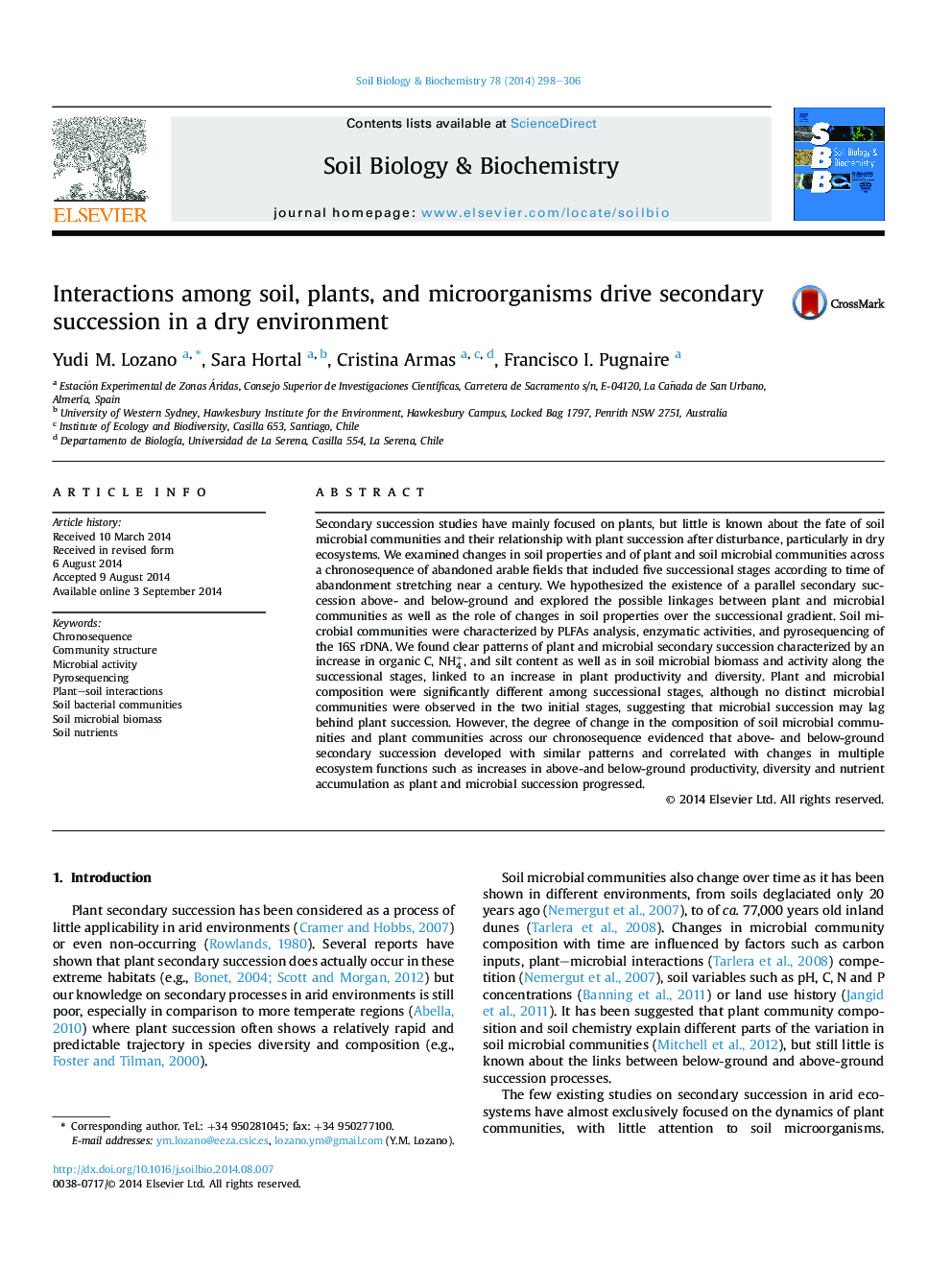| کد مقاله | کد نشریه | سال انتشار | مقاله انگلیسی | نسخه تمام متن |
|---|---|---|---|---|
| 2024596 | 1542606 | 2014 | 9 صفحه PDF | دانلود رایگان |
• Soil and plant communities were determined in a chronosequence of land abandonment.
• Plant and microbial communities follow a parallel successional pattern.
• These data suggest feedbacks between below- and above-ground communities.
• Changes in soil communities are linked to plant productivity and diversity.
Secondary succession studies have mainly focused on plants, but little is known about the fate of soil microbial communities and their relationship with plant succession after disturbance, particularly in dry ecosystems. We examined changes in soil properties and of plant and soil microbial communities across a chronosequence of abandoned arable fields that included five successional stages according to time of abandonment stretching near a century. We hypothesized the existence of a parallel secondary succession above- and below-ground and explored the possible linkages between plant and microbial communities as well as the role of changes in soil properties over the successional gradient. Soil microbial communities were characterized by PLFAs analysis, enzymatic activities, and pyrosequencing of the 16S rDNA. We found clear patterns of plant and microbial secondary succession characterized by an increase in organic C, NH4+, and silt content as well as in soil microbial biomass and activity along the successional stages, linked to an increase in plant productivity and diversity. Plant and microbial composition were significantly different among successional stages, although no distinct microbial communities were observed in the two initial stages, suggesting that microbial succession may lag behind plant succession. However, the degree of change in the composition of soil microbial communities and plant communities across our chronosequence evidenced that above- and below-ground secondary succession developed with similar patterns and correlated with changes in multiple ecosystem functions such as increases in above-and below-ground productivity, diversity and nutrient accumulation as plant and microbial succession progressed.
Journal: Soil Biology and Biochemistry - Volume 78, November 2014, Pages 298–306
